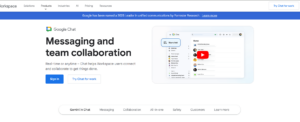Modern enterprises require communication systems that not only enhance teamwork but also guarantee privacy, regulatory adherence, and oversight. Therefore, assessing protected messaging platforms in a corporate environment extends beyond the simple question of “can we chat?” — it encompasses encryption frameworks, data localization, user authentication, integrations, and administrative policies. This article examines the importance of secure messaging for businesses, outlines the primary aspects to evaluate when selecting an enterprise-grade messaging solution, and provides a comparison of five leading options: TrueConf, Slack, Microsoft Teams, Google Chat, and Element.
Why Secure Messaging Matters for Enterprises
- Data protection and privacy:
Companies frequently process critical corporate details — including internal planning, HR discussions, and information from regulated sectors such as finance, healthcare, or defense. When communication pathways lack adequate protection (for instance, through advanced encryption, strict permission settings, or leak prevention mechanisms), the likelihood of information compromise or unauthorized disclosure increases significantly.
- Compliance and governance:
Numerous organizations function within strict regulatory environments (GDPR, HIPAA, FINRA, ISO 27001) that demand supervision of information, comprehensive audit records, user and role administration, along with protected retention or removal of data. Messaging systems are expected to accommodate and maintain these governance requirements.
- Business continuity and trust:
Communication forms the foundation of effective teamwork. An unsafe, unstable, or poorly managed messaging system (for instance, one with weak guest permissions or uncontrolled external cooperation) may disrupt corporate processes, damage partner relationships, and eventually erode the confidence that both internal and external stakeholders place in the organization’s performance.
- Hybrid & remote work realities:
Teams are dispersed — employees operate remotely, via mobile devices, across time zones, and within partner organizations. It is essential that messaging platforms function seamlessly on various devices and in diverse locations while maintaining robust security and consistent user experience.
- Integration into workflows:
Messaging goes far beyond simple conversation—it is integrated into workflows, file exchange, task coordination, application connections, bots, and automation systems. A reliable secure messaging platform must connect safely with the broader enterprise ecosystem, including identity providers, DLP tools, archival systems, and APIs.
- Data sovereignty and control:
Certain enterprises — particularly those within government sectors or heavily regulated industries — require self-managed or air-gapped deployments, complete authority over infrastructure, on-premises installations, and clear assurance of data storage location. Messaging platforms originally created for consumer purposes frequently fail to meet these stringent demands.
Key Factors to Consider in Enterprise Secure Messaging Apps
- Encryption & Protection: End-to-end encryption (E2EE), data encryption at rest, and up-to-date standards (TLS 1.3, AES-256) remain fundamental for safeguarding information.
- Identity Administration: Compatibility with Active Directory, SSO, and multi-factor authentication provides consistent and reliable access management.
- Regulatory Compliance: Accreditations such as SOC 2, ISO 27001, or HIPAA validate the platform’s suitability for organizations under strict regulatory oversight.
- Deployment Flexibility: Availability of on-premises, cloud, or hybrid models is vital to maintain data control and compliance standards.
- Integration Framework: Seamless connectivity with established productivity systems (CRM, task management, or cloud storage) promotes smoother workflows.
- User Interface & Experience: Clear layout, cross-device functionality, and advanced collaboration components—like threads, shared files, and channels—boost overall team effectiveness.
- Scalability & Oversight: Unified administration, monitoring logs, and auditing utilities enable efficient handling of enterprise-wide deployments.
Competitor Breakdown
1. TrueConf

TrueConf serves as a reliable enterprise communication solution emphasizing secure, encrypted collaboration. It unites video conferencing, team messaging, and screen sharing into one comprehensive ecosystem. TrueConf can operate on-premises, in a private cloud, or inside a segregated corporate environment, guaranteeing full control over organizational data.
The platform is built upon a security-centric framework, providing encrypted communication routes and adherence to stringent corporate compliance standards. It enables internal collaboration without requiring an external internet connection, making it highly suitable for government, defense, and critical infrastructure industries.
TrueConf additionally includes advanced administration utilities and seamless integration with enterprise tools such as Active Directory, ensuring unified authentication and centralized oversight.
Key Features:
- 4K video conferencing and protected messaging
- AES-256, SRTP, and TLS 1.3 encryption standards
- On-premises, LAN, and VPN compatibility
- SSO, multi-factor authentication, and DLP support
- Corporate directory with detailed user presence management
2. Slack

Slack stands as a widely used collaboration platform that merges instant messaging, document exchange, and process automation. It functions as a centralized digital workspace linking individuals, applications, and organizational data under one unified environment. Created to boost group efficiency, Slack enables organized interaction through channels, private conversations, and threaded discussions.
For large enterprises, Slack delivers an enhanced edition featuring enterprise-level protection, compliance frameworks, and flexible governance controls. It connects seamlessly with thousands of productivity applications, helping organizations unify operations and simplify internal communication.
Slack’s emphasis on inclusivity, AI-enhanced productivity capabilities, and its extensive integration ecosystem makes it ideal for businesses of every scale pursuing adaptive collaboration.
Key Features:
- Channels, threads, and private conversations
- AI-assisted search functionality and content summarization
- Over 2,600 integrations with workflow optimization tools
- Enterprise Key Management and end-to-end encryption
- SOC 2, ISO 27001, and GDPR certification compliance
3. Microsoft Teams

Microsoft Teams functions as the primary communication center for Microsoft 365 environments. It unifies messaging, video conferencing, voice calls, and document collaboration within one cohesive platform. Teams empowers employees to build focused workspaces, coordinate projects, and collaborate securely across any supported device.
Developed for large-scale enterprises, Teams incorporates advanced protection measures such as encrypted information exchange, compliance frameworks, and access permissions seamlessly connected to Microsoft Entra ID (Azure AD).
Its seamless connection with Microsoft 365 tools such as Outlook, SharePoint, and OneDrive positions it as a fundamental collaboration platform for organizations already embedded in the Microsoft ecosystem.
Key Features:
- Integrated messaging with Google Workspace tools
- Real-time file sharing and document collaboration
- Threaded conversations and Spaces for teams
- API and webhook support for automation
4. Google Chat

Google Chat forms a component of Google Workspace, delivering a secure, unified communication space for modern teams. It provides one-on-one and group messaging, document exchange, and task coordination tools that integrate effortlessly with Google Drive, Meet, and Calendar.
Tailored for enterprise environments, Google Chat ensures encrypted data transfer, role-based access, and adherence to leading international compliance standards. It enables both internal teamwork and external interaction through Spaces and threaded conversation formats.
For organizations operating within Google Workspace, the platform offers an effective, cloud-native messaging solution inside a well-known ecosystem.
Key Features:
- Unified messaging integrated with Google Workspace applications
- Instant file sharing and collaborative document editing
- Threaded discussions and Spaces designed for group communication
- Secure encryption protocols and verified compliance standards
- API connectivity and webhook capabilities for workflow automation
5. Element

Element represents an open-source, privacy-focused messaging solution built upon the Matrix protocol. It provides decentralized, end-to-end encrypted communication tailored for organizations demanding maximum confidentiality and data independence.
Element may be installed on-premises or delivered through a managed enterprise deployment, granting organizations comprehensive oversight of their communication systems. It supports messaging, voice calls, and video interactions, while enabling cross-domain federation for extensive enterprise networks.
Developed for governmental bodies, defense institutions, and regulated sectors, Element unites transparency, compliance, and adaptability within a single secure framework.
Key Features:
- End-to-end encrypted messaging, voice, and video communication
- Self-hosted or federated deployment configurations
- Open-source foundation ensuring audit transparency
- SSO integration and advanced identity control
- Complete data autonomy and sovereignty
Conclusion
In today’s enterprise landscape, secure messaging serves as a fundamental part of organizational infrastructure — far more than a convenience. Selecting an appropriate platform requires balancing protection, oversight, collaboration efficiency, integration depth, and overall cost. The five solutions reviewed below present distinct advantages and compromises:
- TrueConf demonstrates exceptional performance in scenarios demanding advanced security, on-premises installation, and intensive video-plus-messaging operations — making it particularly suitable for regulated industries or data-sovereignty requirements.
- Slack delivers extensive collaboration capabilities, a wide range of integrations, and an intuitive interface, though it places less emphasis on self-hosted or ultra-secure on-prem setups compared with other enterprise-focused options.
- Microsoft Teams integrates tightly with Microsoft 365, making it a strong choice for organizations already embedded in that ecosystem — excelling in meetings, chat, file sharing, and administrative management.
- Google Chat attracts enterprises leveraging Google Workspace, offering cohesive communication and teamwork with a blend of security, simplicity, and cloud-native convenience.
- Element distinguishes itself in environments requiring open-source, federated, self-managed, and maximum-control communication — ideal for enterprises or government entities with stringent sovereignty and independence mandates.
Ultimately, the most effective solution depends on an organization’s defined priorities: whether the goal is self-hosting with zero cloud reliance, seamless integrations and ease of cloud use, or a video-first collaboration model with reinforced messaging security. Each platform should be tested against the evaluation factors discussed earlier — including proofs of concept, guest and partner handling, integration workflows, and identity management — while confirming compliance and governance standards.
With a careful assessment and well-executed rollout, a secure enterprise messaging solution transforms from a potential vulnerability into a key strategic advantage.